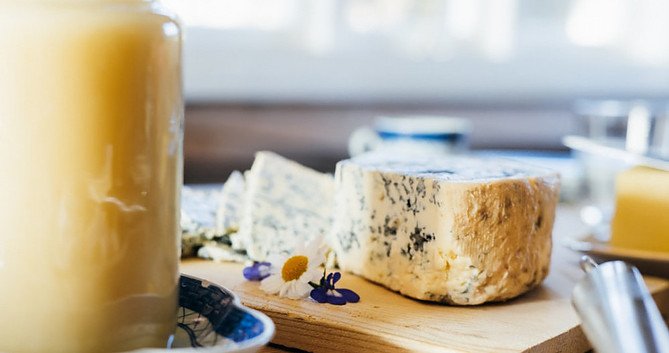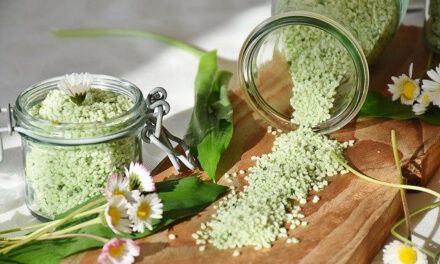High blood pressure is a very common disease, but when it is left untreated, it may cause some serious complications. One of the best ways to help control and prevent this condition is by consuming a healthy diet. In this study, we are going to consider the best cheese types that could help you lower your blood pressure. But some researchers say some kinds of cheese are bad for hypertension. Is cheese bad for high blood pressure? If so, which types?
Let’s find out… But, to help us understand the effects of cheese on hypertension better, let’s cover some facts about it first.
What is High Blood Pressure?
High blood pressure also known as high BP or hypertension is a common disease in which the extended blood force against the artery is too high that it can cause health issues like heart disease.
High blood pressure can be determined by both the quantity of blood the heart pumps and the level of blood flow resistance in the arteries. When your heart pumps more blood, and there is resistance in the blood flow in your arteries, your blood pressure will increase.
You may have hypertension for several years without the symptoms. Yet, damages to your heart and blood vessels continue without the symptoms, but it can be noticed.
When you do not control your high blood pressure, it will heighten the risk of developing some serious health issues such as stroke and heart attack.
Generally, people develop high blood pressure in their later years, and eventually, it affects almost everybody.
Fortunately, hypertension can be detected easily. If you noticed that you suffer hypertension, you should take the necessary measures with the help of your medical care provider to enable you to bring it under control.
What is Cheese?
Cheese is a food item that is produced from milk that can either be soft or firm. It’s generally white or yellowish.
This food is rich in protein and calcium, but it can, at the same time, be high in sodium and saturated fats.
Some people do not take daily cheese due to lactose intolerance, or milk allergy because they want to lose weight or they are on a vegan diet.
Cheese provides several health benefits which some are quite surprising. Some people see cheese as healthy food, but others do not. It also depends on the individual, the type and quantity of cheese you consume.
Types of Cheese
First, it is necessary to understand that cheese can be categorized in different ways as below.
- Texture (hard, semi-soft, soft)
- Flavor (extra sharp, sharp, mild)
- Age
- Method of preparation (bacteria-ripened, mold-ripened, unripened)
- The milk type used (buffalo, sheep, goat, cow)
- Color
- Country of origin
- Region of origin

Tip: Creamers are different from milk and creams.
There are also many types of cheese, but Marcella Wright divided cheese into 8 different types.
1. Fresh cheese
Fresh cheese also called unripened cheese, is a spreadable soft cheese with very mild flavors and creamy textures. Fresh cheese can be prepared with different kinds of milk and also different quantities of salt, just like other cheeses which provide them with different flavors.
The fresh cheese texture also depends on how much moisture and whey is drained from the finished product, which may come out like cottage cheese (soupy) or queso fresco (crumbly).
Some known fresh cheese include;
- cottage cheese,
- cream cheese,
- queso Fresco,
- ricotta,
- mascarpone,
- chevre.
2. Pasta Filata
Pasta Filata is an Italian word for spun paste. It is fresh cheese curds that are steeped in hot water and spun into various shapes.
Mozzarella is possibly the most popular pasta Filata.
The kneading and heating process aliens the cheese protein structure, making it stretch more when it is melted. Pasta Filata cheeses can be stored and aged for a longer period and can be smoked also for more flavor.
Some pasta filata cheeses include;
- mozzarella,
- burrata,
- provolone,
- queso oaxaca,
- scamorza affumicata,
- caciocavallo.
3. Soft-ripened (Bloomy Rind) cheese
The most popular soft-ripened cheeses are Camembert and Brie, all from France. One thing that distinguishes these earthly creamy cheeses is the then white rind of growing mold.
These softy-ripened cheeses, during the period of short aging, are exposed to specific strains of mold such as penicillium Camembert which convert fats to aromatic compounds known as ketones. These ketones import a mushroomy ammonia edge to the Camembert.
Some of these soft-ripened cheeses are;
- Brie,
- Camembert,
- cambozola.
4. Semi-soft cheese
After a short aging period (generally a few months), semi-soft cheese becomes a flexible moist and creamy cheese. Havarti is a popular semi-soft cheese that comes with a gentle flavor.
Some of these semi-soft cheese include;
- Havarti,
- Muenster (America),
- Chaumes,
- Jarlsberg.
5. Washed-Rind cheese
The wash-rind type is among the biggest stinkers in the world of cheese. The popular Limburger cheese has a powerful aroma similar to that of an old sneaker.
The stinky washed-rind cheeses are washed in beer, liquor or wine two times a week for two a period of 2 months.
Washing it in beer or brine helps to kill the mold and also help a bacterium known as Brevibacterium
linens to grow.
Some of these washed-rind cheese is;
- Limburger,
- Taleggio,
- Epoisses,
- Alsatian Munster.
6. Blue cheese
Soft-ripened cheeses such as brie are treated with mold externally, but blue cheeses are inculcated internally with mold. One of the interesting things about blue mold is that it only grows when it is exposed to air.
The cheese has white interiors when they are pressed into molds first. But during the aging process, at some point, the cheesemakers will make a hole on the wheel skin allowing air which begins the mold growth process.
Blue cheeses are generally salty with nutty flavors.
Some blue cheeses include;
- Roquefort,
- Stilton,
- Danish blue,
- Gorgonzola.

Tip: Cheddar cheese is a good snack for reactive low blood sugar episodes. Here are 14 facts you might not know about Reactive Hypoglycemia Diet.
7. Semi-hard cheese
Cheddar is a popular semi-hard cheese, and it is the largest type of cheese available on the market. These cheeses earn their flavor from two different sources; the aging period of the particular cheese and the bacteria strain that is introduced to the milk.
Cheeses are fermented. When there is an introduction of bacteria to the milk, they convert natural sugar (lactose) in the milk into lactic acid. The presence of that lactic acid contributes to making the cheeses have a distinctive tang.
The aging period of semi-hard cheese determines the flavor and hardness of the cheese. That is possible because cheese loses moisture during the aging process, as it hardens the cheese and increases its natural flavor.
Semi-hard cheeses are;
- Cheddar,
- Edam,
- Goude,
- Monterey jack,
- Swiss,
- Emmental,
- Gruyere.
8. Hard cheese
This type is usually kept for extra-hard, very low moisture cheese such as Parmesan, Asiago, and manchego.
These cheeses are known for their strong saltiness and rich flavor profile.
These cheeses are so hard that they are mostly grated over foods like soup and pasta, not sliced. These cheeses are aged for up to 3 years but not less than 2 years. They form thick natural rinds that are hard to bite, but they are great additions to stocks and soups.
These hard-cheeses include;
- Asiago,
- Parmigiano-Reggiano,
- Pecorino,
- Manchego.
The Differences Between Types of Cheese
Cheese comes in many different textures, flavors, and styles, but all are made with one basic ingredient, which is milk.
So, the question now is what makes one cheese different from the other? Here are the reasons.
1. Country of origin
This is place where the cheese was initially developed. Some countries would want to protect the name of their cheese, which implies that it must be produced in a certain location of the world, and under a précised control method, otherwise, they would not share the same name.
Manchego and Roquefort are examples of these types of cheeses.
Other cheeses were first produced in a certain region but are now being produced all over the world. Gouda is a good example of those cheeses.
Generally, the qualities of protected cheese are far better than the latter.
2. Types of milk
Every cheese starts with milk, but what makes the difference is the animal from which the milk comes from.
Cow milk is very mild with a sweet, creamy flavor that turns to more subtle flavor in the cheese, and aging plays an important role in promoting the flavor in the cheese.
Sheep milk also has a mild flavor and less buttery sweetness when compared to that of the cow. It is high in fat and produces a creamy-textured cheese.
Goat milk has more water content than that of the cow and produces softer cheese.
3. Aging process
Most cheese undergoes the aging process in a more controlled temperature. During this period, the cheese loses moisture making it harder and increases the flavor. Also, during the aging period, bacteria start to digest the proteins changing the cheese texture from crumbly and grainy to creamy and smooth (though after the cheese loses enough moisture, it can turn crumbly and grainy again, like in Parmesan). Also, bacteria on the outside help to develop a rind and promote flavor.
The aging period can be from some days to about 24 months or more. As the aging period rises, the cheese earns a stronger flavor and turns more crumbly in texture.
4. Additional salt
Salt is a very important ingredient in making cheese. It adds to the flavor and plays an essential role in draining the moisture content in the cheese, helping to protect the cheese from bacterial contamination, and maintaining a smooth texture. But, some different cheeses add salt during the process and some other by rinsing it in liquor or brine solution.
What Kind of Cheese Can You Eat With High Blood Pressure?
Daily cheese is a good source of calcium that helps to keep your bones stronger. Nevertheless, it can also contain high saturated fat, and some of these cheeses can also have a high content of salt.
But, there is low-fat cheese you can eat with high blood pressure that can provide you with enough calcium and potassium to help reduce your blood pressure. Mozzarella is among the lower fat and lower salt cheese.
Eating lower-fat cheese like mozzarella, cottage, Emmental or other lower-fat cheese will give you less saturated fat. Also, goats milk cheese and sift cheese are of help to people with high blood pressure.
What Kind of Cheese Should You Not Eat With High Blood Pressure?
Most cheese has a high content of sodium which increases blood pressure. So be very cautious!
Cheese like Parmesan, Danish blue, Stilton, cream cheese, some feta cheese, Camembert, and other types of cheese with a high level of saturated fat, cholesterol, and salt can increase your blood pressure and the chances of cardiovascular disease.

Is Cottage Cheese Bad for High Blood Pressure?
Cottage cheese is an ideal source of calcium which plays a significant role in determining the health of bones and teeth. It also assists in preventing osteoporosis and in controlling your blood pressure. It is also believed that cottage cheese contributes to preventing some cancers like prostate cancer.
Cottage cheese is not bad for high blood pressure to speak but helps in regulating it.
This cheese is never aged but served fresh. It comes in different sizes and varieties of taste.
Is Cream Cheese Bad for High Blood Pressure?
Cream cheese is generally soft with a mild taste. It is a known spread for bagels, bread, and crackers.
Cream cheese has a very high content of saturated fat cholesterol which makes it unhealthy for high blood pressure.
It contains a little amount of protein and carbohydrates, but it is good for riboflavin and vitamin A.
Cream cheese loads your body with saturated fats and cholesterol, and in such should be avoided.
Is Feta Cheese Bad for High Blood Pressure?
Feta cheese is produced from cow’s milk, and it has a very strong flavor and grainy texture.
It has a low content of calories and fat compared to other cheese. However, Feta is high in sodium, it is pressured in a brine solution with a high content of salt, which increases high blood pressure. Therefore, feta cheese is not quite good for high blood pressure.

Is Goat Cheese Better Than Cow’s Cheese?
Goat cheese is better than cow cheese in several ways.
Let’s find out how.
-
It has lesser cholesterol and saturated fats
Goat cheese contains short and medium-sized fatty acid chains like caproic acid, capric acid, and caprylic acid, which digest very easily.
It is a low-fat alternative to dairy cheese.
It reduces cholesterol levels, reduces the chances of liver damage and cardiovascular diseases.
-
Lower sodium levels
Too much sodium can lead to an ischemic attack, renal failure, and increased hypertension.
Goat cheese contains only 118mg sodium while grated Parmesan cheese contains 511mg in one ounce.
-
Less harmful casein variant
The types of casein found in cow cheese trigger insulin resistance and type1 diabetes. But goat cheese contains a different kind of casein known as A2 bête casein, with higher calcium which can increase insulin sensitivity and protect you from diabetes.
Tip: Here are some interesting myths about food for diabetics.
-
Rich in vitamins
Goat cheese has more vitamins and minerals than cow cheese. Also, it increases the concentration of these elements from the food source. Goat cheese is notably rich in riboflavin, vitamin A, k, niacin, and folate which maintain exoskeleton health and help in the synthesis of blood clotting and red blood cells.

Tip: Remember, vitamin deficiencies can result in muscle pains and leg cramps too.
Is Grate Cheese Better Than Sliced Cheese?
There are different opinions as regards whether grate cheese is better than sliced cheese, but it all depends on the type of cheese.
Softer cheese can be difficult to grate. Cheese like brie cannot be grated, but hard cheese is better grated that the sliced.
The grating can reduce a big size of cheese to small pieces. It seems light and soft when grated, and eating grated cheese allows you to chew and break the cheese down much faster and easier compared to eating sliced cheese.
Also, grated cheese has better taste than sliced cheese because the increased surface areas will allow you to have more taste of the cheese, and you can also find the texture satisfying the more.
Best Cheese Types Which Could Help Lower Your Blood Pressure
Research shows that the highest reduction in blood pressure is noticed with food that is low in saturated fat, and total fat, low in salt, but rich in vegetables and fruit. Low-fat regular foods, like reduced-fat cheese, milk, fromage frais, and yogurts, provide enough calcium that works with potassium to reduce blood pressure. Such cheeses include;
- Mozzarella cheese,
- Brie cheese,
- goat cheese, etc.
Tip: Don’t be mislead by those who say Green Vegetables Cause Type 2 Diabetes.
Cheese Eating Habits Which Could Help Lower Your Blood Pressure
Scientists reveal that certain types of cheese could assist to minimize the danger of high blood pressure by moving the stress away from over-worked vital organs and blood vessels. These cheeses contain amino acids which relax blood vessels and subsequently minimize the risk of incurring hypertension.
Tip: Cheese goes well with apple cider vinegar, which can help you manage diabetes too.
Italian scientists observed that eating these cheese can reduce your blood pressure by 8/7mmHg. According to Dr. Giuseppe Crippa
of the hypertension unit of Guglielmo Da Sliceto Hospital and Catholic University, it has a similar effect to what you would get from anti-hypertensive medications.
Also, adding these cheeses to your healthy meal can provide clinically meaningful blood pressure-lowering advantages.
Conclusion
Eating cheeses that are low in cholesterol and saturated fat, and other diets rich in fruits, whole grain and vegetables can help you lower your blood pressure successfully. And with a healthy diet, will help minimize or even prevent the need for medication.






0 Comments